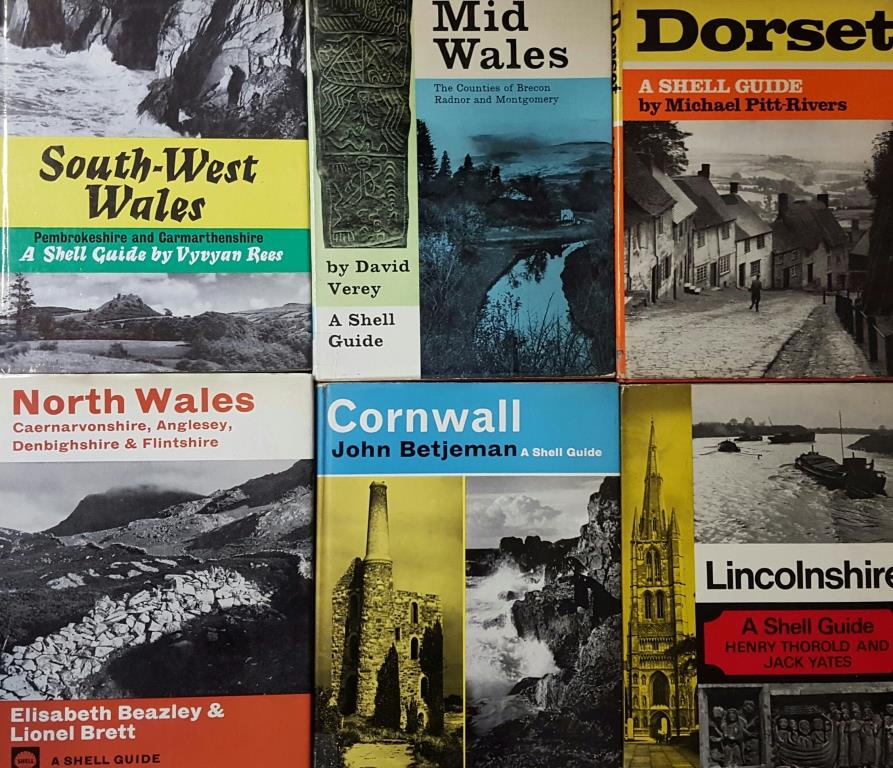Written by Claire Wooldridge, Project Senior Library Assistant: Landscape Institute
The Shell Guides, published between 1934 and 1984, were designed to be light hearted but engaging guide books to the countryside and historical sites of Great Britain for the growing number of mid twentieth century car owners. Published by the Architectural Press and funded by Shell-Mex (more driving = more fuel…) the Shell Guides were intended to tag along with day-trippers, being less than 50 pages long they were ideal for a glove compartment. Bold and visual, each guide contains an introduction to the area covered and descriptions of each place or landmark to be found there.
From Dorset to Derbyshire, Cambridgeshire to Cornwall, the guides covered most regions of Great Britain. Different regions were studied by different writers, including a host of well know names including John Piper (artist, 1903-1992, writer of Oxfordshire published in 1938) and Paul Nash (artist and painter, 1889-1947, writer of Dorset published in 1935). Paul Nash went to live in Swanage for a year to work on the book, suffering from shellshock from WW1, this was an opportunity for Nash to find peace in the countryside. Sir John Betjeman (poet, writer and broadcaster, 1906-1984) edited the series and also contributed several titles, most notably Cornwall (1934).
We received several editions of the Shell Guides from the Landscape Institute library, some which were new to us and some which are different editions of titles we already hold. Several of these were presented by Shell-Mex and B. P. Ltd to the Landscape Institute. These new additions to the collection will sit alongside our existing ones in our Printing Collection (part of our Special Collections) with Landscape Institute provenance recorded in the catalogue records.
The guides have an enduring popularity (such as being the focus of books and two TV series, one featuring Richard Wilson and another with David Heathcote, a cultural historian who has written about the Shell Guides) and are very collectable today. Thirteen Shell Guides were published before the outbreak of WW2 and were reissued after the war. Different editions within the Shell Guides series, with contemporary typography and images, were published in later decades – making collecting all the different copies something of a challenge! The Shell Guides from the Landscape Institute Collections make a wonderful addition to our existing holdings.
For more information see David Heathcote’s (2010) A Shell eye on Britain: The Shell County Guides 1934-1984 (Libri).




